Panama is a small but diverse country and I get lots of questions from people who want to know which part of the country might be best for their individual retirement home. There are many factors to consider and a lot of options, but mostly choices come down to beach, mountains or city.
There are expat communities in just about every hamlet, town and city in Panama and they are almost always warm, inviting and affordable. It would be very difficult to discuss the pros and cons of each area—from the phenomenal surfing in Bocas del Toro to the stunning views found at 1,350 feet of elevation in Santa Fe which backs up to the Veraguas mountain range. Panama City is the only true metropolis with over 1.5 million residents, lots of tall towers with sparkling new condominiums, a strong cultural presence and great nightlife.
Considering The Options Broadly
Panama City is convenient, but the traffic can be difficult. The new $2 billion subway system, which is only a third complete, is already easing traffic and the proposed fourth bridge over the Panama Canal promises to make rush hour traffic much more pleasant. The new bridge will widen the existing Arraijan Highway and intersect with the third subway line. The first bids have been opened for estimates and it is projected to take three years to complete.
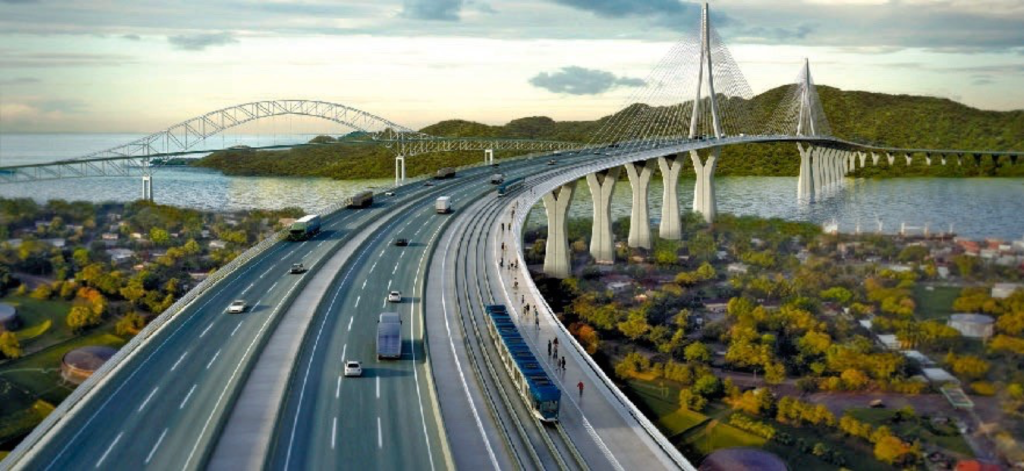
Many expats settling in Panama City are still working and are often times younger than those choosing beach or mountain locations. Because Panama City enjoys the most robust economy in Latin America, more than 80 banking institutions have offices in the city, along with most major companies with a Latin American presence. This has allowed Panama City to welcome individuals and families from all over the world. In addition to expats from the United States and Canada, there are many new residents from Venezuela, El Salvador, Honduras, Columbia and Russia making Panama City a cosmopolitan melting pot.
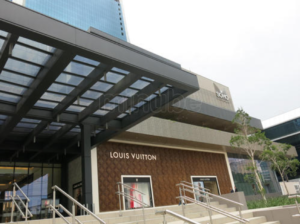
Panama City is the most expensive area for individuals to live in the country. Rent can easily run $2,000 a month and that is for a relatively small apartment. If you are looking for three bedrooms, consider $3,500 a month. Food is plentiful and the gleaming grocery stores carry a wide range of American and Canadian brands. There are specialty butcher shops, wine stores and high-end international shopping including such stores as Hermes, Gucci, Cartier, Prada, Caroline Herrera and Pull & Bear. If you get tired during your shopping, you might want to consider the Moet & Chandon champagne bar nestled among the high-end shops in the Multiplaza Pacific Mall.
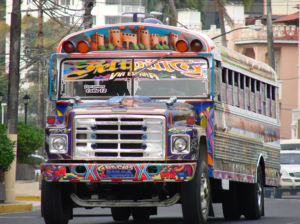
There are many options for a fun evening out in Panama City. Food is generally less expensive than you would find in the United States, but it is every bit as good. For example, Manolo Caracol, located in the old quarters of Casco Viejo, offers a 10-course tasting menu based on what the chef can find in the local farmers’ markets and fishing co-ops. Service is what you would expect in a top New York or London restaurant. La Posta, with its 1950s Havana feel is elegant, but not pretentious, while dishing out some of the best Italian fare found anywhere. The wine list is good and the atmosphere makes you want to linger.
Panama City is rapidly becoming comparable to any large city or international capital. It was only a few years ago that residents were still riding the old diablo rojo buses (Red Devil) which were converted from condemned American school buses and painted garish colors. Today public transportation is in modern air-conditioned buses.
It takes energy and money to live in Panama City, but you will be amazed at what a booming location it rapidly has become under the pro-business leadership of the last two presidents. Panama no longer relies simply on the Panama Canal for much of it’s Gross Domestic Product (GDP), but rather has diversified into tourism, banking, insurance and container ports. The economic engine has also grown with increased foreign investments after signing strong trade agreements with countries everywhere from Europe to Singapore and North America.
If clients believe living a cosmopolitan life in Panama City is right for them, options for housing abounds. It’s my advice that people buy their homes as opposed to renting in the city because the market has rebounded and is booming. Think Florida 20 years ago! From 2008 until 2012 there was a glut of housing in the city because so many builders saw the opportunity when Panama City began to develop rapidly, but today that has stabilized. Banks will finance property and owner financing is also available. Prices are still considerably less than what you would find in most other cities offering first-world amenities such as Panama City.
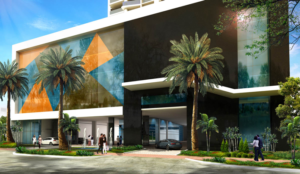
Marbella 47 is a residential building located in a prime area of Panama City along Calle 47 and is close to banking, restaurants and all the conveniences. It’s a 22-story structure with 17 apartment floors and four apartments per floor. Parkside, located in the rapidly developing area of Costa del Este, is situated on an 18-hole golf course and there are 30 levels of apartments, with two apartments per level. Villa del Mar is in the heart of the city at Balboa Avenue and Calle Uruguay with 24 floors of apartments in the 31-story building. All of these locations have amenities including gourmet kitchens, sweeping views, master bedrooms with ensuite and social areas with pools and gyms.
The Beach Areas
Many retirees are drawn to the beautiful beaches located along both the Caribbean Sea and the Pacific Ocean. Expats find the beaches less hectic and much less expensive. There are more retired expats so finding and establishing friendships is very easy. Most restaurants and social venues have weekly happy hours that cater to an international crowd.
Which beach is generally the biggest question I get when counseling clients. There are more and more beach options and high rises are rapidly going up, especially along the Pacific Ocean. One property I always present when I find someone is torn between beach and city, is Casa Bonita. Located just 15 minutes from the city, it is the closest city residential complex with beach access. After the new bridge is built over the Panama Canal, Casa Bonita will be even more accessible to the amenities found in Panama City. Currently, even with Panama City traffic, it less than 40 minutes from Tocumen International Airport.
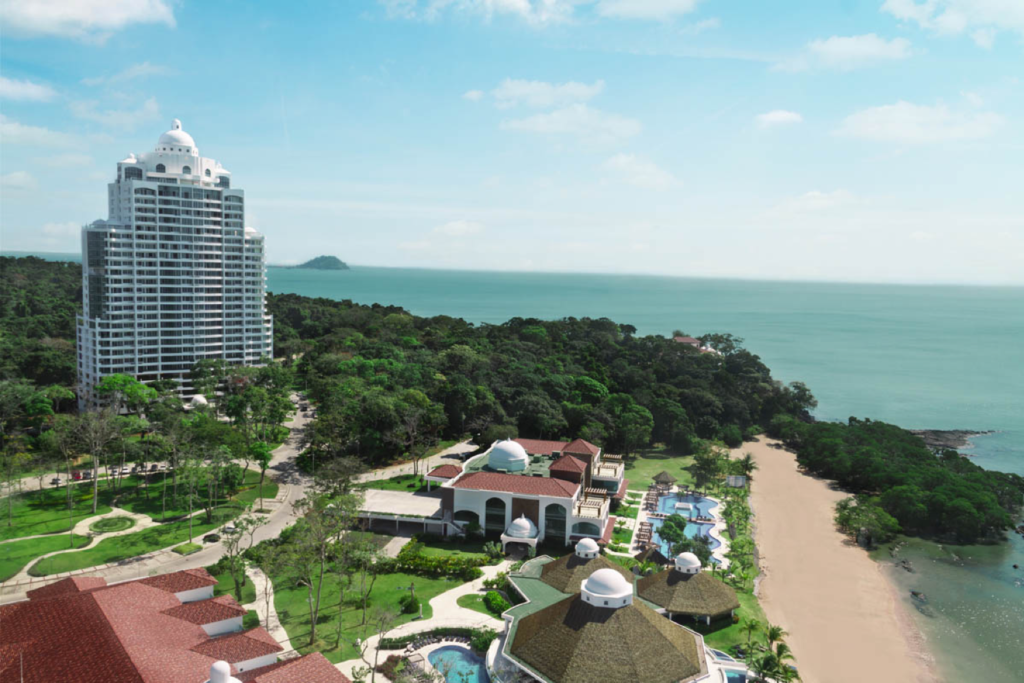
Casa Bonita is part of a complex which also contains a five-star Westin hotel and a private beach club. This is the only property in Panama situated so there are ocean, rainforest and canal views. At night, it is wonderful to see the large vessels queuing up to enter the Panama Canal. Casa Bonita is one of the more expensive properties found in Panama, but it has everything including room service from the hotel, easy access to everything a five-star resort offers, modern gourmet kitchens, sweeping balconies and huge windows. A multitude of pools are available along with the beach being within walking distance.
There is less of a social scene for retirees at Casa Bonita even though many of the residents are expats. Residents here tend to be business professionals who need easy access in and out of Panama via the international airport, but who like the soothing qualities of living on the beach. It really is the best of both worlds.
Coronado, a modern area located just fifty minutes from Panama City, is the most well-established place for expats who have retired. The social scene is vibrant, with somewhere to go every night and restaurants range from fine dining to little fondas located along the Pan-American Highway that runs from Panama City to the border of Costa Rica.
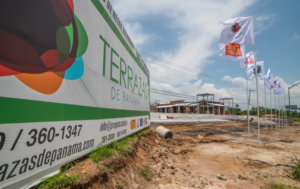
There are other fabulous residential options along the coast, including the new Royal Palm complex located in Nueva Gorgona, but Coronado is where you go to find first-rate healthcare, four American-style groceries, a specialty wine shop, spas, veterinarians and other retail outlets selling everything from granite to appliances.
For residents in Nueva Gorgona and Royal Palm, the drive into Coronado is simple since it is only 10 minutes away, but things will soon be even easier with the opening of Terrazas de Panama Coronado. Located between Coronado and Nueva Gorgona, the complex boasts a Do It Center and an Arrocha along with a variety of new eateries including Papa John’s Pizza, Cinnabon and a gourmet deli.
With development beginning to expand in the Gorgona area, more and more retail outlets are making Coronado not the only place to shop!
Another thirty minutes from Coronado and you will enter a section of the Pacific coast that has a number of high-end resorts such as the JW Marriott. Many of these resorts are all-inclusive and designed for the vacationer who plans never to leave the premises. There are restaurants which can be utilized by home owners, but it is often times difficult to get into the resort complex and the prices are higher than found elsewhere in Panama. There are residential properties within the resorts, but they are mainly occupied by families who come together for a few weeks and stay among themselves before returning home. Many of these families are from Panama and this is a beach retreat or they are from South American countries.
It is the beach area that always garners the ranking as one of the best locations for retirement in the world because of the stunning views and direct access to the beach, along with beautiful weather and amenities such as a number of golf-courses, a beach club and equestrian center. Expats come from all over the world, tend to have more leisure time and social options.
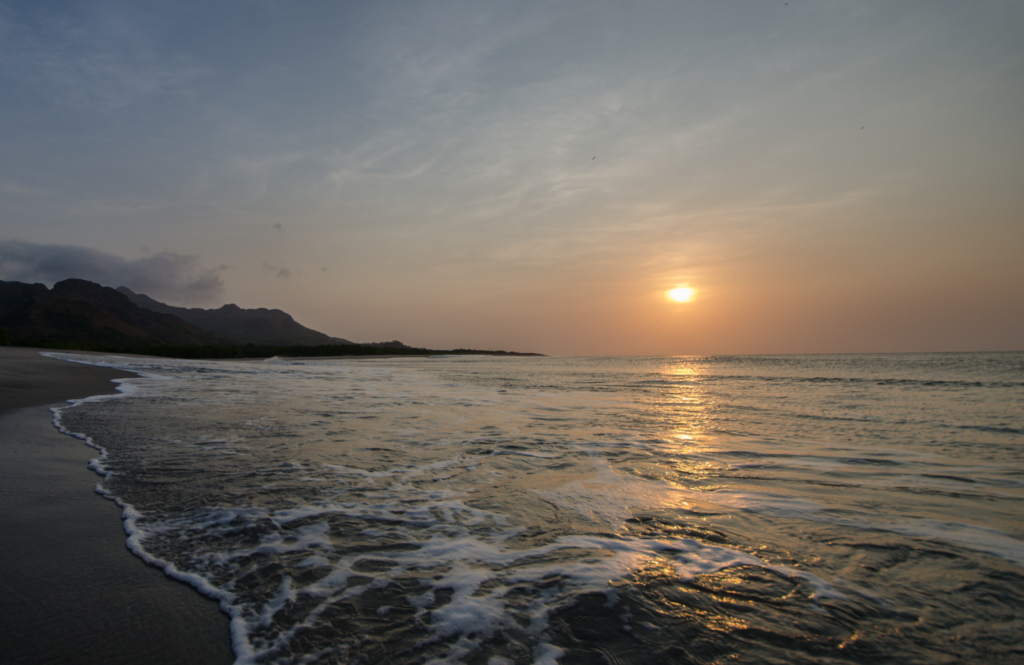
There are many beach options, but most other beach properties in Panama are pretty remote. Bocas del Toro has gracious single-family homes with 10,000 square feet, but almost no restaurants outside of the town center. To live easily, it would be necessary for all the food and supplies to be brought in via boat which is not only expensive, it’s also time consuming.
The Mountains
For retirees who truly want to be alone with nature, the interior of Panama might be the perfect place for their next home. There are many small cities located in the mountains with a strong expat population, but they tend to be very different than the expats found both in the city and on the beaches.
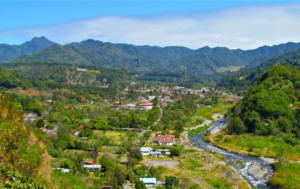
The American magazine Conde Nast Traveler mentioned that when you stand on the top of the Volcan Baru, you can often times simultaneously see both the Atlantic and Pacific oceans. Because the town is in the highest elevation, the weather tends to be much cooler than Panama City or on the beaches. The days are more spring-like and the evenings cool.
There are about 3,000 expats living in Boquete and 60% of those are Americans who live there year-round. Canadians make up another large group, but most of them are there only as snowbirds since they must stay in Canada for a certain period of time to maintain their healthcare. Other significant expat groups in Boquete are Russians, Venezuelans, French and Italians.
There are other mountain towns, some with as few as 3,200 people. These are areas were horses are still routinely used for transportation and many indigenous people live. Some of the communities are built around coffee or vegetable farms and there are few restaurants or any type of social activities.
Houses can be extremely inexpensive (i.e. $75,000 for a two bedroom two bath) up to more than a million depending on amenities and square footage. Most homes come with separate accommodations for live-in help which is inexpensive.
Expats who find the mountains appealing generally are not that taken with living either on the Caribbean Sea or the Pacific Ocean. There are more artists’ enclaves in the mountains and people who do not worry about meeting a lot of new friends.
Small, But With Choices
Panama is one of the smallest countries in Latin America but it has emerged as one of the most dynamic and versatile. Riding a strong economic wave, Panama City is changing quickly into a bustling sophisticated city with world-class infrastructure. The real estate market is beginning to take off, but it is still a stunning bargain when compared to many other parts of the world. Panama also offers incredible homes on the beach as well as in the mountains. Each area is very different and all three hold unique elements which speak to different groups, but all well within a budget.

 Copyright 2024
Copyright 2024
Liz, I here that you can double your profit in panama in five years. That’s sounds like a large margin to climb, you even do this in the states. Also what you think about Coco Beach Panama
Hi Paul! While there are some savvy investors who have made excellent returns on investment through real estate in Panama, particularly buying at the right time in pre-construction, no one has a crystal ball to predict with absolute certainty what the market is going to do! As for Coco Beach, or indeed any project that you are interested in, I would recommend that you find out as much as you can about the developer and their track record for delivering projects on time and on budget.
Thanks for the site. I live on an island near the Canadian border in Washington State. My son in law is a pilot and asked if I had considered Panama for the winter. Until he mentioned it, I had not thought about it. Living on the island (3 hours and a boat ride from Seattle), the laid back “We’ll get to it” lifestyle is ingrained. I will continue to investigate. The idea is interesting.
Hi Wayne, and great to hear that you are getting some value out of my website. Panama has a lot to offer, and also many different lifestyle options – i always think that coming to see for yourself is the best way to research if a place is right for you!